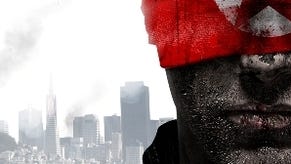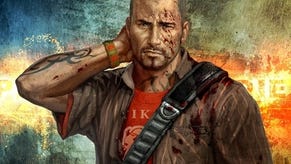Homefront
Seoul mates?
"Press X to jump in mass grave". I've been confronted with some bizarre button prompts in my time, but Homefront earns itself a special biscuit for this strangely calm exhortation to dive in amongst my slaughtered neighbours.
The moment also neatly encapsulates the ways in which Homefront takes aim at an obvious and broad target, yet somehow still manages to miss the bullseye.
The plot is as simple as it is implausible. North and South Korea are reunited and become a new superpower, just as America's economy collapses and bird flu ravages the population. Before you can say Senator McCarthy, the evil Communist menace has invaded American soil - and these Reds aren't hiding under any beds. No, they're murdering and oppressing like there's an expiration date for villainy, casually shooting a young mother and father in front of their child during the opening sequence, just in case having enemy soldiers occupying your country wasn't motivation enough to get you up and shooting.
It's here that the game hits the first of several snags. Not only does the situation make little sense, but our relationship to it is flimsy and vague. Maybe you need to be American to truly appreciate the chilling horror of this Tea Party nightmare, but when you're playing as a mute ex-Marine whose reason for fighting back is simply that someone gives him a gun and says, "Hey, shoot those Koreans, would you?", it's hard to care.
The same is true of your companions, a small and thinly sketched bunch of resistance fighters who make all the right action movie noises but never really become characters in their own right. The premise of the game all but demands rich back-stories, personal tales of loss and tragedy that have led each character to this point, but they remain empty cyphers to the end.

Not that sub-par characterisation will be at the front of your mind as you follow these cardboard cut-outs through a single-player campaign that is slim even by current first-person shooter standards. Most of the time you'll be wondering why these characters are even here, since you're always either being shoved aside while they move the plot forwards, or left to fend for yourself while they hide behind scenery. There's no middle ground.
So when the game tells you which button to press to jump into a mass grave and hide from a Korean patrol, it's especially pointless. You already know that's what you've got to do because the game has manoeuvred you into a place where it's the only logical response, while your NPC companions have voiced the thought for you and jumped in to illustrate the point - but you can't actually do anything until that prompt appears and gives you permission 10 seconds later.
That's how scripted this game is. Every ladder, every door, every obstacle forces you to step aside and wait while AI drones take the lead. Then you follow in their wake, always heading for the little white blob that says "follow", in case you were in any doubt.
The closest you get to breaking ranks is dawdling around while they wait at checkpoints, searching for the glowing golden newspapers that provide your recommended daily allowance of pointless collectible as your companions bellow looped instructions to regroup. Even then, stray too far from the preferred path while rooting around, and our old friend Invisible Walls makes an unwelcome return to shove you back in the right direction.
It's a shame, because when the game stops dragging you along by the hand and lets you make choices of your own, it's generally good stuff. Aiming and accuracy are both perfectly realised, while the best encounters take place in large, open locations with dozens of opportunities to forge your own path through the carnage. But then, all too soon, the game clamps shut again and you're back in the corridor, doing as you're told, watching those digital arses shuffle and sway in front of you.
Graphically, things are similarly flaky. Homefront sometimes musters an impressive view - such as when you first see a makeshift work camp with shacks sprawling into the distance against a sombre sunset - but it struggles in gameplay. Characters glitch into each other, scenery snags and the frame rate wheezes during larger set-piece battles. It's certainly not terrible, but as with high-end racing games, the FPS genre is no place for visual slouching.










